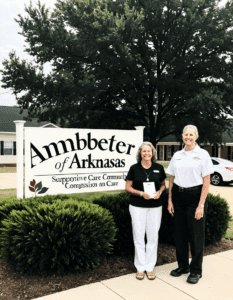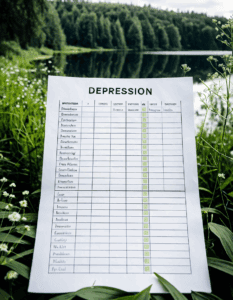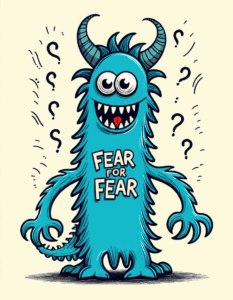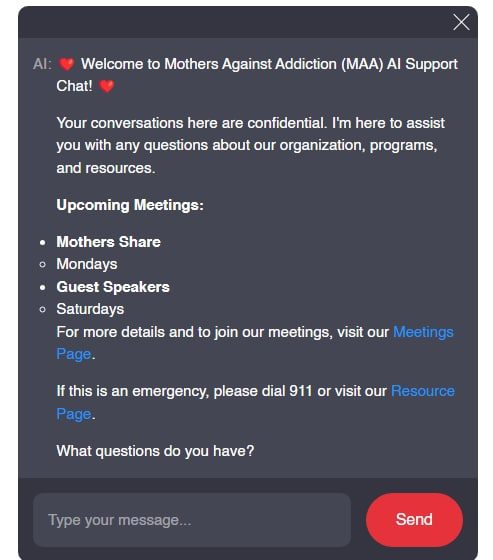Unveiling the Overdose Crisis: A Deep Dive into Fatalities and Hidden Dangers
The Escalation of Overdose Rates: Alarming Statistics and Trends
In 2024, the grim reality of overdose fatalities continues to impact communities worldwide. According to the Centers for Disease Control and Prevention (CDC), overdose deaths in the United States have reached unprecedented levels, surpassing previous records. Each year, more families are torn apart by the loss of loved ones to this preventable tragedy.
The soaring statistics paint a disturbing picture. The proliferation of synthetic opioids, easier access to substances, and the stigmatization of addiction create a perfect storm. Overdose deaths are no longer confined to any one demographic; they ripple across every social stratum. As we scrutinize these dimensions, it becomes clear that a multifaceted approach is crucial in combating the crisis.
| Category | Details |
| Definition | An overdose occurs when a person consumes a toxic amount of a substance, such as drugs or alcohol, leading to severe health consequences. |
| Types of Overdose | – Intentional: Occurs when an individual purposely takes an excessive amount of a substance. |
| – Unintentional (Accidental): Occurs when an individual unknowingly takes an excessive amount of a substance. | |
| – Undetermined Intent: When the intention behind the overdose is unclear. | |
| Healthcare Assessment | – Full Assessment: Includes blood tests, observation, and a psychological review to determine the state of the person. |
| – Physical Examination: Conducted to assess vital signs and physical health status. | |
| Initial Response | – Call Emergency Services: Contact emergency services immediately if an overdose is suspected. |
| – First Aid: Provide basic first aid if trained to do so, such as CPR or administering naloxone for opioid overdoses. | |
| Medical Interventions | – Activated Charcoal: Administered to absorb the substance in the stomach. |
| – IV Fluids: Provided to maintain hydration and support organ function. | |
| – Medications: Such as naloxone for opioids, can be administered to counteract the effects of certain drugs. | |
| – Monitoring: Continuous observation and monitoring of the person’s vital signs and mental status. | |
| Psychological Review | Assessment of mental health to determine if the overdose was intentional and to plan for subsequent psychological and addiction support. |
| Prevention | – Education: Raising awareness about the risks of substance abuse. |
| – Safe Storage of Medications: Keeping prescription drugs in a secure location. | |
| – Prescription Guidelines: Following the prescribed dosage and guidelines strictly. | |
| – Harm Reduction Programs: Providing access to resources such as needle exchange programs and safe consumption rooms. | |
| Support for Families | – Counseling Services: Offering psychological support and counseling for affected families. |
| – Support Groups: Providing a platform for sharing experiences and coping strategies. | |
| – Information Resources: Making educational materials available to understand addiction and prevention. | |
| Outcome | – Recovery: With prompt and appropriate medical intervention, many individuals recover successfully. |
| – Complications: Potential long-term health issues or mental health challenges can arise. | |
| – Fatalities: Without timely intervention, overdoses can lead to death. |
Synthetic Opioids: The Silent Killers Behind the Overdose Epidemic
Synthetic opioids, particularly fentanyl, stand out as silent killers in the overdose epidemic. Originally designed for pain management, fentanyl has now seeped into the illicit drug market, becoming a deadly addition to street drugs. Its potency—up to 100 times stronger than morphine—makes even minuscule amounts potentially lethal.
The Drug Enforcement Administration (DEA) reports that the majority of recent overdose fatalities involve fentanyl or its analogs. This substance is often mixed with other drugs without users’ knowledge, leading to unintended and fatal combinations. Efforts to combat this threat involve rigorous law enforcement and public education campaigns, yet the battle rages on.
The Role of Prescription Medications: Legal Drugs with Deadly Outcomes
Prescription opioids like oxycodone and hydrocodone, known by brand names OxyContin and Vicodin respectively, have long been implicated in the overdose crisis. Over-prescription and insufficient monitoring exacerbate the issue. The Journal of the American Medical Association (JAMA) links the availability of these medications directly to rising overdose deaths.
Historically, the aggressive marketing of painkillers without adequate oversight led to widespread misuse. Recent regulatory efforts aim to curb this trend, but balancing the therapeutic benefits of pain management with potential misuse remains a significant hurdle. As we grapple with these challenges, the importance of rehabilitation and compassionate care cannot be overstated.
The Mixing Danger: Polydrug Use and Its Lethal Consequences
Polydrug use—consuming more than one substance simultaneously—greatly increases overdose risk. Combining opioids with stimulants like cocaine or depressants such as benzodiazepines can lead to fatal interactions. Celebrities like Mac Miller have tragically highlighted the perilous nature of polydrug abuse.
Biologically, these combinations tax the body in unpredictable ways, overwhelming the central nervous system and resulting in respiratory failure or cardiac arrest. Awareness campaigns and educational initiatives emphasize the dangers of mixing substances, aiming to reduce such high-risk behaviors among vulnerable populations.
Overdose Among Youth: A Rising Concern
Overdose deaths among adolescents and young adults are surging, driven by factors like peer pressure, mental health issues, and experimentation. The National Institute on Drug Abuse (NIDA) reports a steep increase in overdose rates for those aged 15-24. Teenagers experimenting with drugs often lack awareness of the risks, making them particularly vulnerable.
Society’s failure to address underlying mental health struggles and the impact of social media adds layers to this crisis. Initiatives like the Truth Initiative aim to reduce substance use among youth by promoting truth over myth and emphasizing the realities of addiction.
Narcan: The Lifesaving Antidote and Its Accessibility Challenges
Naloxone, often known by its brand name Narcan, is a critical lifesaver in reversing opioid overdoses. When administered promptly, it can revive individuals from the brink of death. Despite its life-saving efficacy, accessibility issues persist, ranging from cost barriers to lack of awareness.
Legislation in states like California and New York seeks to expand Narcan availability through community programs and pharmacies. However, inconsistent education and distribution hinder full implementation. Encouraging wider distribution and training can save countless lives, making it imperative that policies continue to evolve.
Battling the Stigma: The Societal Response to Overdose Deaths
Stigma surrounding addiction profoundly impedes effective solutions. Misunderstanding and bias against those battling addiction lead to insufficient policy response and social support. Organizations like Shatterproof and Mothersagainstaddiction.org work diligently to humanize addiction, fostering empathy and informed dialogue.
Overcoming stigma involves changing public perception from seeing addiction as a moral failing to recognizing it as a chronic disease. Initiatives designed to educate and build support systems are crucial in pressing towards a more compassionate and effective response to the overdose crisis.
Innovative Tech Solutions: Pioneering Efforts to Prevent Overdose
Technology presents promising solutions in the fight against overdose fatalities. From wearables that monitor vitals to AI-driven models predicting at-risk individuals, innovation is at the forefront. Companies like Brave Technology Co-op develop devices that alert emergency contacts during an overdose, offering critical intervention windows.
The Harm Reduction Circle uses AI to track usage patterns, providing early warnings and tailored support. While these technologies show immense potential, widespread adoption and effectiveness hinge on continued investment and collaboration between developers and healthcare providers.
A New Hope: Collaborative Efforts and Community-Based Approaches
Success in reducing overdose fatalities requires collaborative community efforts. Grassroots organizations, healthcare providers, policymakers, and affected families play integral roles. Vancouver’s Insite, a supervised injection facility, exemplifies how community engagement saves lives by providing safe spaces and immediate medical help.
Collective action, shared experiences, and sustained advocacy create powerful change agents. As we advocate for these models, we must remember that empathy and compassion are our greatest tools. The community’s resilience and solidarity embody the hope needed to turn the tide against overdose deaths.
Addressing the overdose crisis requires not just multifaceted strategies but an unwavering commitment to change. By highlighting hidden dangers and promoting innovative solutions, we edge closer to a reality where fewer lives are lost to this epidemic. The fight against overdose demands resilience, compassion, and relentless advocacy. Together, we can make a difference. For more profound insights into addiction and recovery, visit Mothersagainstaddiction.org.
Overdose Fatalities: Hidden Dangers Exposed
Rising Statistics
Did you know that overdose fatalities claim thousands of lives annually? The numbers are staggering. High-profile overdose cases often get coverage in Msn Crime News, drawing public attention to this growing crisis. What’s more shocking is that many of these deaths involve prescription medications. Yes, the pills in your medicine cabinet could pose an unexpected threat. Unscrupulous individuals sometimes even manage to get life insurance despite suffering from severe substance dependencies, similar to the complexities in securing policies from title insurance Companies.
Economic Impact
The financial toll of overdoses on families and communities is enormous. The ripple effect of these tragedies reverberates through our economy. Interestingly, shifts in the Fed rate hike interest rates have indirect effects on the cost of addiction treatments and rehabilitation programs. Whether you’re a parent or someone who works in healthcare, understanding these connections can help you advocate for better policies and support systems.
Important Voices
Leadership plays a crucial role in combating the overdose crisis. Recently, in a President Biden speech, the administration outlined new initiatives aimed at reducing opioid overdoses. These plans focus on increasing funding for education and prevention programs, which are essential for keeping our communities safe and healthy. It’s encouraging to see more focused efforts from the top to address such an urgent issue.
Overdose is not just a personal tragedy; it has widespread effects that touch every part of society. Understanding these layers and the actions being taken offers a clearer path forward in combating this alarming trend.

What are 5 signs of an overdose?
Five signs of an overdose include difficulty breathing, unconsciousness, blue or pale skin, confusion, and vomiting. If you see these signs in someone, get help immediately.
What is the best thing to do if you overdose?
If you overdose, the best thing to do is call 911 or your local emergency number right away. Stay calm, if possible, and try to give emergency personnel as much information as you can about what was taken and when.
What happens if you overdose and go to the hospital?
When you overdose and go to the hospital, the emergency team will do a full assessment. They might run blood tests, observe you closely, perform a physical examination, and possibly a psychological review to understand your condition better.
What are the three types of overdose?
There are three types of overdose: intentional, unintentional (or accidental), and of undetermined intent. Each type has different causes and circumstances.
What are the six steps to respond to an overdose?
The six steps to respond to an overdose include calling 911, administering naloxone (Narcan) if available, performing rescue breathing or CPR if the person isn’t breathing, staying with the person until help arrives, putting the person in the recovery position if they’re unconscious but breathing, and giving as much information to the emergency personnel as you can.
What happens if you take 8 pills at once?
Taking 8 pills at once can be very dangerous and potentially life-threatening. It depends on the type of pills, but it’s always best to seek medical attention immediately.
How many pills are too many?
The number of pills that are too many varies by medication. Always follow the prescribed dose and talk to a healthcare provider if you’re unsure. Overdosing can lead to serious health complications or death.
What does Narcan feel like?
Narcan can cause withdrawal symptoms in someone who has an opioid dependency. People often describe feeling agitated, anxious, or experiencing discomfort after it’s administered. It rapidly reverses an overdose, giving the person a chance to breathe again.
What happens if you take four pills at once?
Taking four pills at once can also be dangerous and depends on the medication. Always follow the prescribed dose and seek medical advice if you’ve taken too many.
Can someone go to jail for overdose?
Someone generally isn’t jailed simply for overdosing. The focus is usually on providing medical help. However, there might be legal consequences if other criminal activities are involved, but the primary concern is health and safety.
What do hospitals do when you overdose on Tylenol?
When someone overdoses on Tylenol, the hospital may provide activated charcoal to limit absorption or administer an antidote like N-acetylcysteine. They’ll do a full assessment and may also perform blood tests and a physical examination.
What is sedation after overdose?
Sedation after an overdose involves using medicine to calm or help someone sleep. This can help manage agitation and discomfort, especially after a severe overdose.
How to stop overdosing?
To stop overdosing, it’s crucial to seek help, such as counseling, rehabilitation, and support groups. Understanding triggers and having a strong support network also plays a significant role in recovery.
What is a class 1 overdose?
A class 1 overdose usually isn’t a medical term. However, discussing it with a healthcare professional for a better context or clarification would be best.
How to treat medicine overdose at home?
Treating a medicine overdose at home isn’t recommended. Immediate medical help should always be sought. Never try to treat an overdose by yourself.
Does overdose cause dizziness?
Overdose can indeed cause dizziness among other symptoms. If you or someone else experiences dizziness after taking medicine, seek medical help immediately.
What is a perc?
A perc is short for Percocet, a prescription painkiller that combines oxycodone and acetaminophen. It’s often prescribed for moderate to severe pain.
When to use Narcan?
Narcan should be used during a suspected opioid overdose. Signs include unresponsiveness and difficulty breathing. It’s a life-saving medication that should be administered as quickly as possible.
What is the first thing to do after recognizing an overdose?
The first thing to do after recognizing an overdose is to call 911 immediately. Quick response can save lives, so don’t hesitate to get emergency help.




























